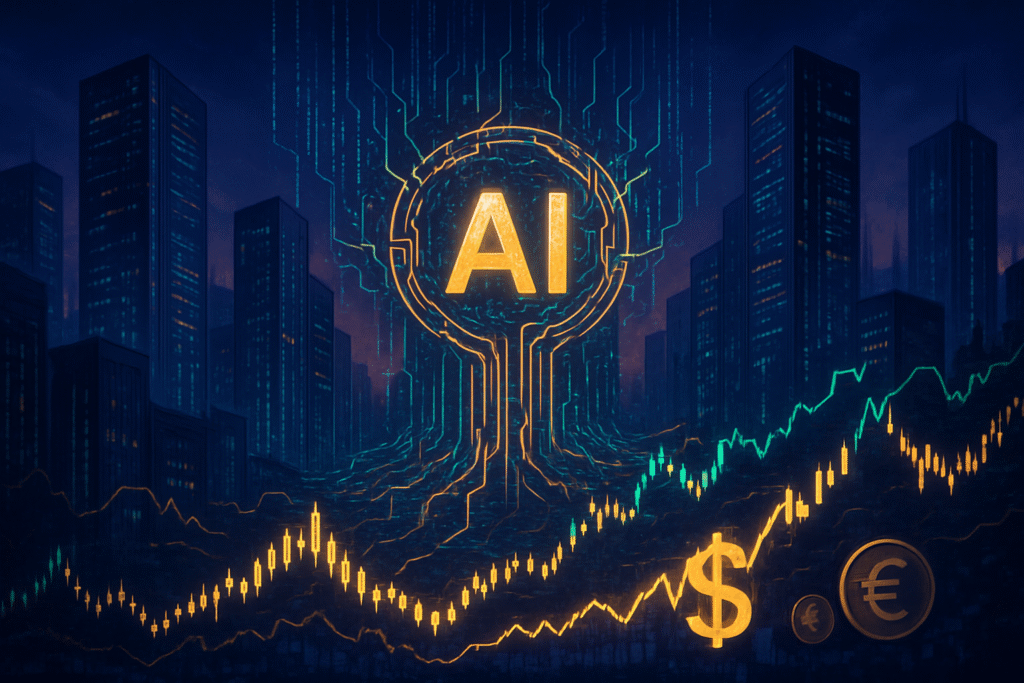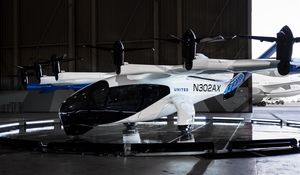
The artificial intelligence sector is experiencing an unprecedented surge in investment, with multi-billion dollar capital injections becoming the norm. This influx of funds, while fueling rapid advancements and transformative potential, is simultaneously intensifying concerns about an "AI bubble" that could rival historical market manias. As of October 16, 2025, market sentiment is sharply divided, with fervent optimism for AI's future clashing against growing apprehension regarding overvaluation and the sustainability of current growth.
Unprecedented Capital Influx Fuels Skyrocketing Valuations
The current AI landscape is characterized by a "gold rush" mentality, with both established tech giants and venture capitalists pouring staggering amounts of capital into the sector. This investment spans foundational model developers, infrastructure providers, and specialized AI startups, leading to valuations that have soared to dizzying heights.
For instance, AI powerhouse OpenAI has seen its valuation skyrocket to an estimated $500 billion, a dramatic increase from $157 billion just a year prior. Similarly, Anthropic's valuation nearly trebled from $60 billion in March to $170 billion by September/October 2025. In a striking example of market exuberance, a startup named Thinking Machines Lab reportedly secured $2 billion in funding at a $10 billion valuation despite having no products, customers, or revenues, relying heavily on its founder's resume. This kind of speculative investment, driven by the perceived potential rather than proven profitability, is a hallmark of the current market.
Leading technology companies are also committing hundreds of billions to AI infrastructure. Amazon (NASDAQ: AMZN) is expected to dedicate approximately $100 billion in capital expenditures for 2025, with a substantial portion flowing into AI initiatives within Amazon Web Services (AWS). Amazon also doubled its investment in generative AI developer Anthropic to $8 billion in November 2024. Microsoft (NASDAQ: MSFT) plans to invest around $80 billion in 2025, with its CEO hinting at $100 billion for the next fiscal year, building on its existing $10 billion investment in OpenAI. Alphabet (NASDAQ: GOOGL), Google's parent company, has increased its capital expenditure target to $85 billion for 2025, while Meta (NASDAQ: META) anticipates spending between $66 billion and $72 billion on AI infrastructure in the same period. This massive capital deployment is driving "insatiable demand" for specialized AI chips, benefiting companies like Nvidia (NASDAQ: NVDA), which has seen a 116% year-over-year jump in brand value to $43.2 billion. Total corporate AI investment hit $252.3 billion in 2024, with generative AI alone attracting $33.9 billion in private investment, an 18.7% increase from 2023.
The sheer scale of these investments and the rapid rise in valuations have ignited significant debate about an impending "AI bubble." Prominent financial institutions like the Bank of England, the International Monetary Fund, and JP Morgan CEO Jamie Dimon have openly expressed fears of an AI bubble. A BofA Global Research survey in October 2025 revealed that 54% of global fund managers believe AI stocks are in a bubble. Many analysts draw parallels to the late 1990s dot-com bubble, citing irrational exuberance and the divergence of asset prices from fundamental value. Financial journalist Andrew Ross Sorkin suggests the current economy is being "propped up, almost artificially, by the artificial intelligence boom," cautioning that today's stock markets echo those preceding the Great Depression.
Competitive Battlegrounds and Strategic Advantages
The intense investment in AI is creating fierce competitive battlegrounds, reshaping the strategies of tech giants, major AI labs, and startups alike. Companies that can effectively leverage these developments stand to gain significant market share, while others risk being left behind.
Major beneficiaries include hyperscalers like Amazon, Microsoft, Alphabet, and Meta, whose massive investments in AI infrastructure, data centers, and research position them at the forefront of the AI revolution. Their ability to integrate AI into existing cloud services, consumer products, and enterprise solutions provides a substantial strategic advantage. Chipmakers such as Nvidia (NASDAQ: NVDA) and Arm Holdings (NASDAQ: ARM) are also direct beneficiaries, experiencing unprecedented demand for their specialized AI processors, which are the backbone of modern AI development. AI-native startups like OpenAI and Anthropic, despite their high valuations, benefit from the continuous flow of venture capital, allowing them to push the boundaries of foundational models and attract top talent.
The competitive implications are profound. Tech giants are locked in an arms race to develop the most powerful large language models (LLMs) and generative AI applications, leading to rapid iteration and innovation. This competition can disrupt existing products and services, forcing companies across various sectors to adopt AI or risk obsolescence. For example, traditional software companies are scrambling to integrate generative AI capabilities into their offerings, while content creation industries are grappling with the implications of AI-generated media. The "Magnificent 7" tech companies, all heavily invested in AI, now constitute over a third of the S&P 500 index, raising concerns about market concentration and the widespread impact if the AI bubble were to burst.
However, the high cost of developing and deploying advanced AI also creates barriers to entry for smaller players, potentially consolidating power among the well-funded few. Startups, while agile, face immense pressure to demonstrate viable business models and achieve profitability to justify their valuations. The strategic advantage lies not just in technological prowess but also in the ability to monetize AI effectively and integrate it seamlessly into a scalable ecosystem. Companies that can bridge the gap between groundbreaking research and practical, revenue-generating applications will be the ultimate winners in this high-stakes environment.
The Broader AI Landscape and Looming Concerns
The current AI investment frenzy fits into a broader trend of accelerating technological advancement, yet it also raises significant concerns about market stability and ethical implications. While some argue that the current boom is fundamentally different from past bubbles due to stronger underlying fundamentals, the parallels to historical speculative manias are hard to ignore.
One of the primary concerns is the potential for overvaluation. Many AI stocks, such as Nvidia and Arm, trade at extremely high price-to-earnings ratios (over 40x and 90x forward earnings, respectively), leaving little room for error if growth expectations are not met. Former Meta executive Nick Clegg warned that the chance of an AI market correction is "pretty high" due to "unbelievable, crazy valuations" and the intense pace of deal-making. This mirrors the dot-com era, where companies with little to no revenue were valued in the billions based solely on speculative potential. Moreover, research from MIT highlighted that 95% of organizations are currently seeing no return from their generative AI investments, raising questions about the sustainability of current valuations and the path to profitability for many AI ventures.
However, counterarguments suggest that the current AI expansion is largely driven by profitable global companies reinvesting substantial free cash flow into tangible physical infrastructure, such as data centers, rather than relying solely on speculative ventures. The planned capital expenditures by Amazon, Microsoft, Alphabet, and Meta through 2025 are described as "balance-sheet decisions, not speculative ventures." This suggests a more robust foundation compared to the dot-com bubble, where many companies lacked profitable business models. Nevertheless, potential bottlenecks in power, data, or commodity supply chains could hinder AI progress and harm valuations, highlighting the infrastructure-dependent nature of this boom.
The broader significance extends beyond financial markets. The rapid development of AI brings with it ethical concerns around bias, privacy, job displacement, and the potential for misuse. As AI becomes more powerful and pervasive, regulating its development and deployment responsibly will be a critical challenge for governments and international bodies. This period is a crucial juncture, with experts like Professor Olaf Groth from UC Berkeley suggesting the next 12 to 24 months will be critical in determining if the industry can establish profitable businesses around these technologies to justify the massive investments.
The Road Ahead: Innovation, Integration, and Challenges
The future of AI in the wake of these colossal investments promises both revolutionary advancements and significant hurdles. Experts predict a near-term focus on refining existing large language models, improving their efficiency, and integrating them more deeply into enterprise solutions.
In the near term, we can expect continued advancements in multimodal AI, allowing systems to process and generate information across text, images, audio, and video more seamlessly. The focus will also be on making AI models more specialized and domain-specific, moving beyond general-purpose LLMs to create highly effective tools for industries like healthcare, finance, and manufacturing. Edge AI, where AI processing occurs closer to the data source rather than in centralized clouds, is also expected to gain traction, enabling faster, more private, and more robust applications. The "fear of missing out" (FOMO) among investors will likely continue to drive funding into promising startups, particularly those demonstrating clear pathways to commercialization and profitability.
Long-term developments include the pursuit of Artificial General Intelligence (AGI), though timelines remain highly debated. More immediately, we will see AI becoming an even more integral part of daily life, powering everything from personalized education and advanced scientific research to autonomous systems and hyper-efficient supply chains. Potential applications on the horizon include AI-driven drug discovery that dramatically cuts development times, personalized tutors that adapt to individual learning styles, and intelligent assistants capable of handling complex tasks with minimal human oversight.
However, significant challenges remain. The insatiable demand for computational power raises environmental concerns regarding energy consumption. Data privacy and security will become even more critical as AI systems process vast amounts of sensitive information. Addressing algorithmic bias and ensuring fairness in AI decision-making are ongoing ethical imperatives. Furthermore, the economic impact of widespread AI adoption, particularly concerning job displacement and the need for workforce retraining, will require careful societal planning and policy intervention. Experts predict that the market will eventually differentiate between truly transformative AI applications and speculative ventures, leading to a more rational allocation of capital.
A Defining Moment for Artificial Intelligence
The current climate of multi-billion dollar investments and soaring valuations marks a defining moment in the history of artificial intelligence. It underscores the profound belief in AI's transformative power while simultaneously highlighting the inherent risks of speculative market behavior. The key takeaway is a dual narrative: undeniable innovation and potential, shadowed by the specter of an economic correction.
This period’s significance in AI history lies in its accelerated pace of development and the unprecedented scale of capital deployed. Unlike previous AI winters or more modest growth phases, the current boom is characterized by a global race to dominate the AI landscape, driven by both technological breakthroughs and intense competitive pressures. The integration of AI into foundational enterprise infrastructure and consumer products is proceeding at a pace never before witnessed, setting the stage for a truly AI-powered future.
As we move forward, the critical question will be whether the underlying profitability and real-world utility of AI applications can catch up with the sky-high valuations. Investors, companies, and policymakers will need to carefully distinguish between genuine innovation that creates sustainable value and speculative ventures that may prove ephemeral. What to watch for in the coming weeks and months includes further consolidation in the AI startup space, clearer indications of profitability from major AI initiatives, and potential shifts in investment strategies as the market matures. The sustainability of the current growth trajectory will depend on the industry's ability to translate technological prowess into tangible economic returns, navigating the fine line between transformative potential and speculative excess.
This content is intended for informational purposes only and represents analysis of current AI developments.
TokenRing AI delivers enterprise-grade solutions for multi-agent AI workflow orchestration, AI-powered development tools, and seamless remote collaboration platforms.
For more information, visit https://www.tokenring.ai/.





